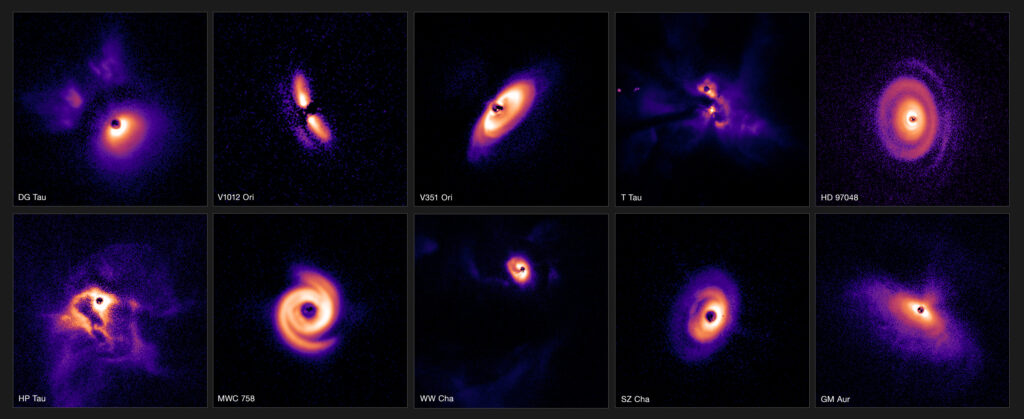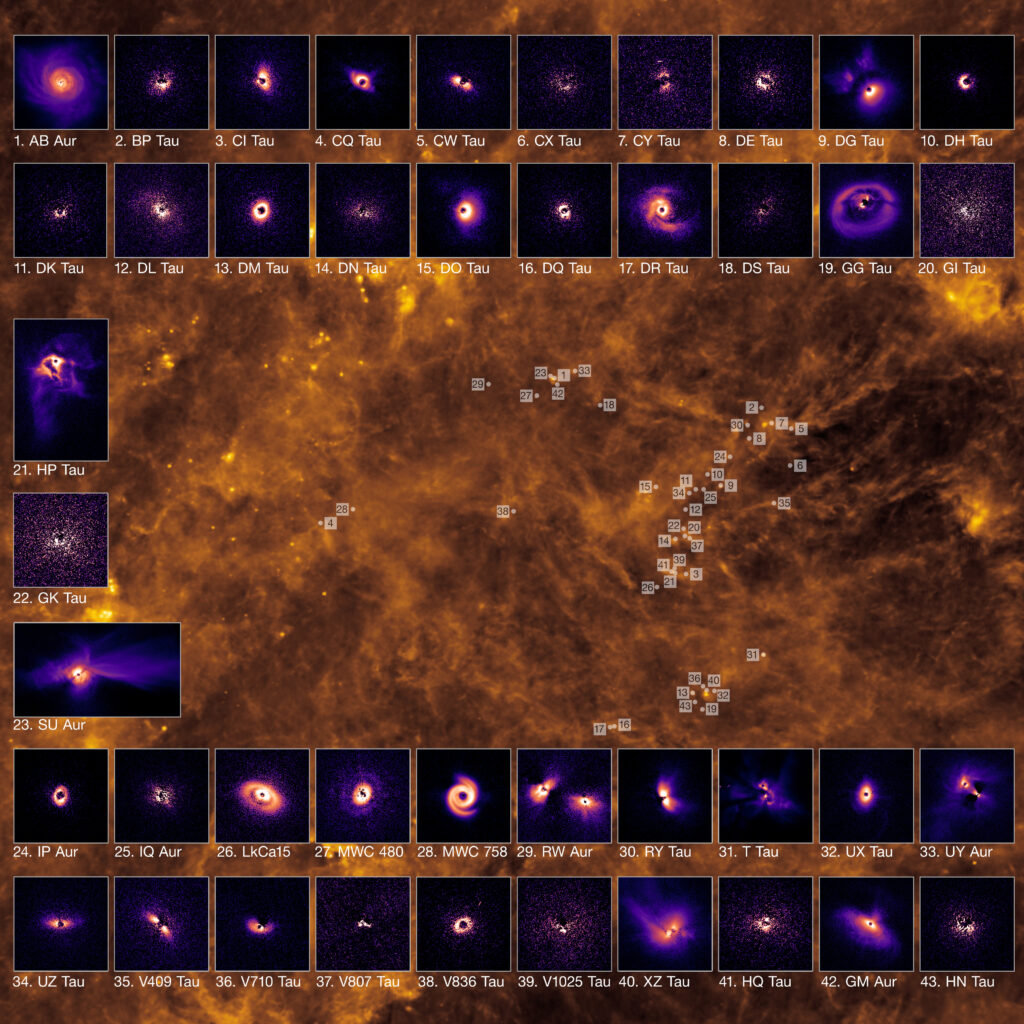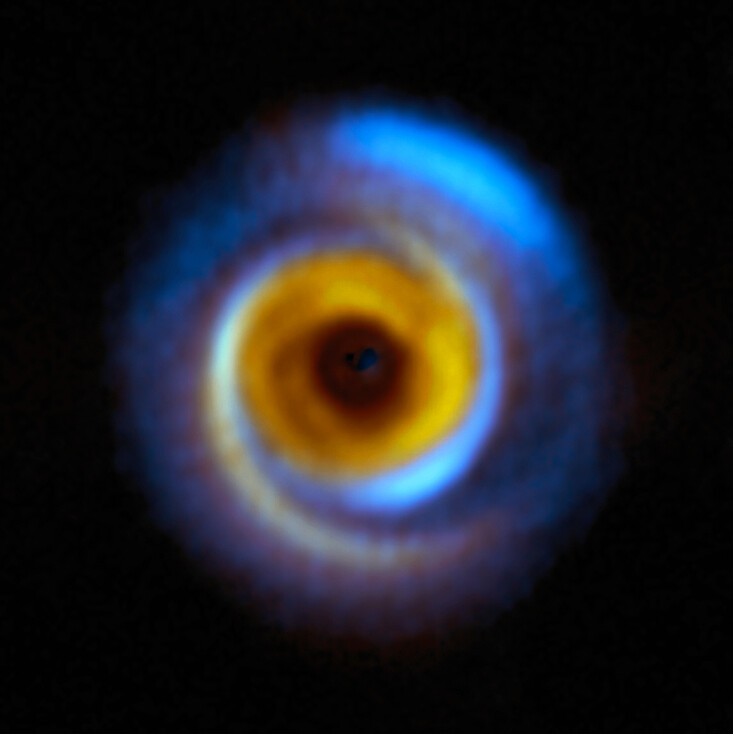Thanks to ESO’s Very Large Telescope (VLT), astronomers have obtained detailed images of over 80 protoplanetary disks. They provided unique details about planet formation in various regions of our galaxy.

To date, astronomers know more than 5 thousand exoplanets. Many of them are located in systems significantly different from ours. To better understand what causes this diversity, astronomers study protoplanetary disks surrounding newborn stars. The best candidate for this is the areas of active star formation.
An international team of astronomers has chosen 86 luminaries located in three regions of active star formation as an object for study. These are the Taurus molecular cloud (430 light-years from Earth), the Chamaeleon I (600 light-years) and the Orion nebula (1600 light-years). The SPHERE tool installed on VLT was used for observations. It is equipped with an adaptive optics system to compensate for the effects of turbulence in the Earth’s atmosphere. Thanks to this, the team was able to obtain images of disks around stars with a mass equal to half the mass of the Sun. These disks are usually too dim for other astronomical instruments.

The VLT images obtained show a huge variety of protoplanetary disks. Some of them contain giant spiral arms, presumably associated with the complex orbital ballet of newborn planets. In others, rings and large cavities are visible, carved by forming bodies. The third ones seem smooth and inactive.
The analysis of the images has already allowed scientists to come to several conclusions. For example, they have found that stars in Orion in groups of two or more are less likely to have large planet-forming disks. This is an important result, given that, unlike our Sun, most of the luminaries in our galaxy have companions. In addition, the uneven appearance of the disks in this region suggests the possibility of massive planets in them, which can cause deformation and displacement of the disks.

As technology advances, astronomers hope to get even more detailed images of protoplanetary disks. They have particularly high hopes for the Extremely Large Telescope, which will begin observations in 2028. Its 39-meter mirror will allow studying the inner regions around the stars, where rocky planets like ours can form.
According to https://www.eso.org
Follow us on Twitter to get the most interesting space news in time
https://twitter.comne/ust_magazine


